While real-world racing series found their seasons suddenly paused this spring, for me and many other sim racers — including a number of those real-world drivers eager to keep racing, no matter the form nor format — it was an opportunity to get some valuable virtual track time.
My own plans to do more regular iRacing this season were premeditated. I had missed the fun of official races and wanted to sharpen my own driving skills. But my availability was certainly aided by the stay-at-home order amid the coronavirus pandemic.
In fact, just when it seemed the rest of the world was shutting down in mid-March, my teammate Karl and I kicked off the season with a top-five drive in the 12 Hours of Sebring. The close battles and strategic decisions we faced helped scratch my racing itch, and also left me wanting more in the weeks ahead.
And there was plenty more where that came from.
Barcelona and Beyond
The following weekend, I joined three of my SRN Motorsports teammates in the 24H SERIES ESPORTS season finale organized by NEO Endurance. Another 12-hour enduro, this time at the Circuit de Barcelona-Catalunya, was on tap, and unlike Sebring, where I’ve driven thousands of laps over the years, this would be my first time racing at Barcelona.
To amplify the challenge, our schedule worked out so that I would be starting the race — my first NEO start since February 2016 — and driving the first two stints against the top drivers from the other Porsche 911 GT3 Cup teams in the field.
The highlight of the day was qualifying. Hoping simply to avoid being the slowest driver on the grid, our team’s scheme of having me run a few hot laps, then cooling the tires for one final attempt, worked like a charm. I wound up starting seventh out of fifteen teams in an unexpected performance that put me in the front half of the field.
The early laps were marred by the sort of mid-field bumper-car action you’d hope might not happen in a 12-hour race. Three laps into the race, I was the last domino to fall when the two cars behind me made contact, punting me into the gravel and back to thirteenth.
From there, I settled into a position just outside the top ten, and as the track continued heating up, the tires were losing grip and I was on the edge of adhesion.
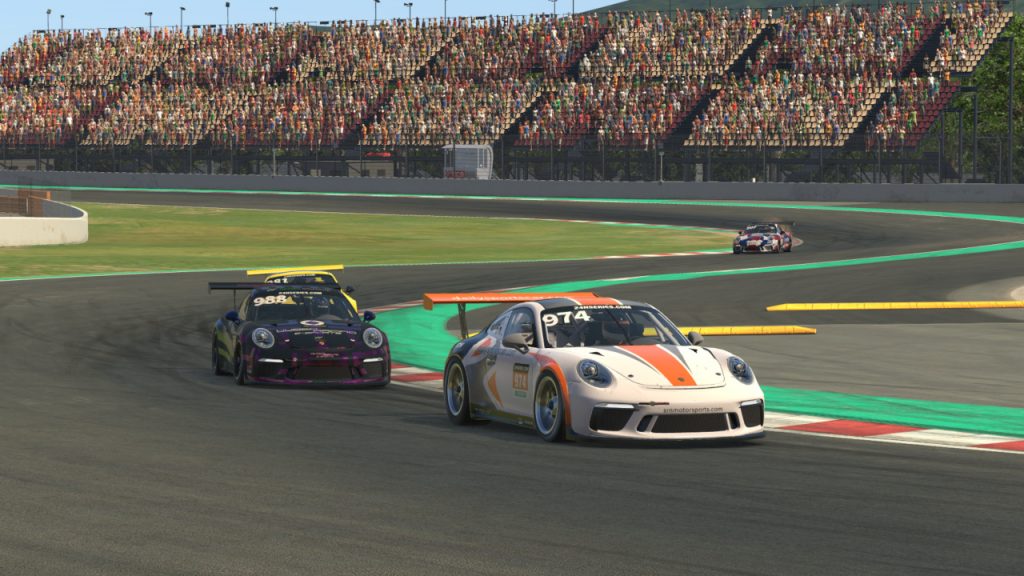
But our team had another trick up its sleeve, and in the first pit stop, we deployed it. By only changing left-side tires, we gained time and two positions in the pits, and even on two older tires and a hot track, I held my own against the drivers around me, handing the car off to my teammates in eighth place.
Their race had some ups and downs, but we made it to the finish in ninth in an ultimately meaningless race as far as points went for our team.
But my own drive inspired me to do even more, and with it becoming abundantly clear that the shuttered world around me would give me time to race during iRacing’s new twelve-week season, I decided to continue driving the Porsche Cup car.
That decision was motivated mainly by my enjoyment of driving the car, but also selfishly because I consider it to be one of my better cars. It’s heavy, it’s got little downforce, and it requires a more patient driving approach than, say, a GTE or GT3 car, which all play to the strengths of my own driving style.
And my decent run in the Barcelona race among some of the quicker drivers in the car also convinced me that I could be a contender in nearly any random official race during the week.
But from the first practice session I joined at Zolder, a surprise was in store: there is a lot of hidden talent on iRacing.
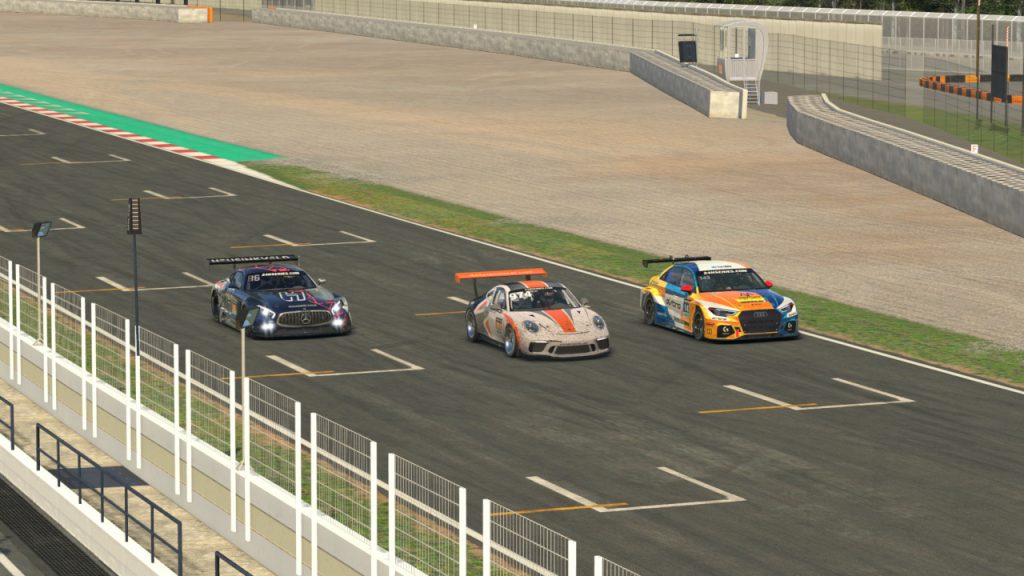
A Surge in Speed
One of the last times I drove in the official Porsche iRacing Cup series was during my 2017 Summer Road Trip. During that week at Watkins Glen, I encountered some quick drivers but was pretty easily able to record three top fives in three starts and even a victory.
However, throughout this summer in which — spoiler alert — I went winless in my races, even top fives were often tough to come by, and plenty of unknown names had unmatchable pace in the Porsche.
So where did all these sudden speed racers come from? There’s not a single reason behind the increased competitiveness compared to my previous ventures in the Porsche, but a few factors seemed to be afoot.
First, iRacing’s overall membership has steadily grown in recent years, particularly this spring, which saw more than 49,000 new signups in March and April alone. That led to an impressive bump in participation, especially in low-level series. The rookie Global Mazda MX-5 Cup averaged more than 300 drivers per race this season.
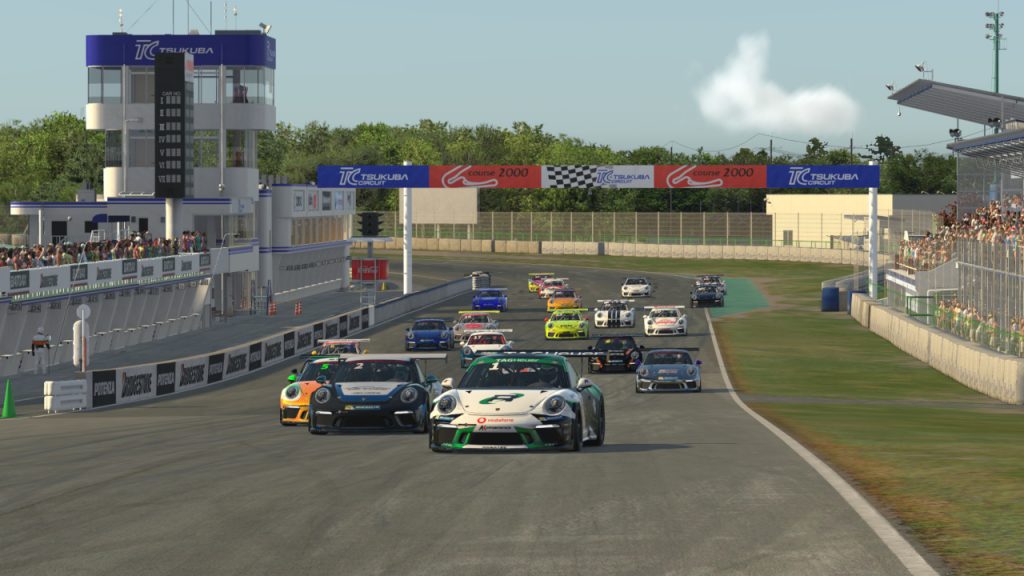
At higher license classes, there has been something of a trickle-up effect, both as new drivers climbed the ranks and as existing members returned or renewed their subscriptions amid the worldwide lockdowns.
At the C-class level, the Porsche iRacing Cup has been one of those series well-positioned to benefit from the increased activity. It has averaged 54 drivers per race, ensuring official races and usually split fields almost around the clock.
Compared to this time one year ago, overall participation in the series was up 228% — from 3,217 drivers in 2019 season two to 7,346 drivers this season.
In addition, consider that the Porsche 911 GT3 Cup is the world championship-level road car on iRacing, so plenty of top-level drivers from the Porsche TAG Heuer Esports Supercup series entered the official-series events throughout the season to stay sharp.
A full 45% of races I entered — or 9 out of 20 — were won by these championship series competitors. With such a high level of competition, I clearly had my work cut out for me.
My season played out in three main phases. First, there were some growing pains and perhaps even nerves to fight as I got back into the swing of regular racing. After that, I found more speed and more comfort behind the wheel. And finally, a full plate of racing across multiple series sent me — and my stats — crashing back down.
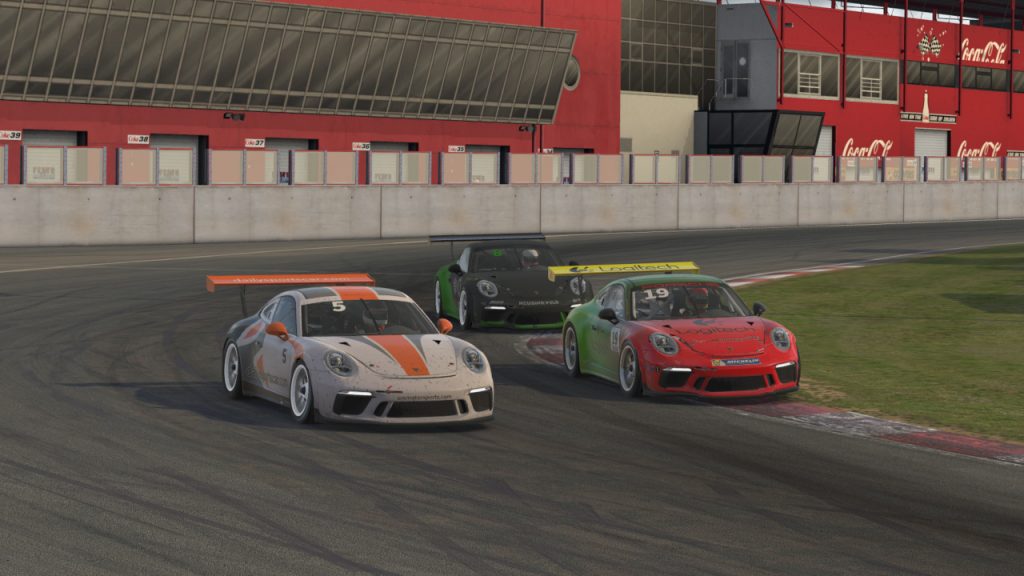
Phase 1: Started from the Bottom
In my first two weeks at Zolder and Spa, even making it onto the grid and off the starting line proved problematic.
Off-tracks on my qualifying laps, slow-loading sessions that caused me to miss qualifying entirely, and a struggle coming to grips with standing starts had me running outside the top ten early in most of my races those weeks.
I did manage one good race at Spa, starting and finishing in sixth and enjoying a race-long fight against a driver with similar iRating just ahead of me.
That battle gave me a second helping of something I tasted at Sebring and had truly missed about official races: sizing up an opponent and figuring out where each of you is faster and slower.
In this case, my opponent seemed to drive away on the long straights before I reeled him back in in the technical sections that followed. But other than one lap when he bobbled through Blanchimont, I couldn’t quite get close enough to have a run at him, so I followed him home to the finish.
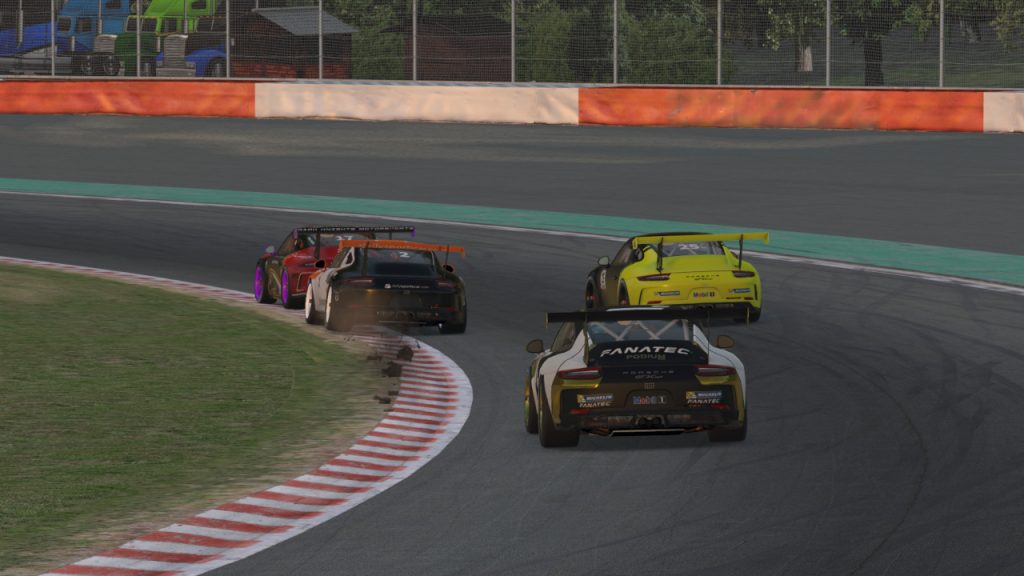
It wasn’t a top-five run like I was accustomed to in the Porsche during previous seasons, but in a strong field, the 165 points in my pocket ended up being my second-highest total of the season. Plus, I was happy to accept the compliments of my competitor about my “damn quick” pace through Spa’s most technical turns.
Unfortunately, that speed didn’t carry over to the next week. From the 4.3-mile lap at Spa, the series headed to the 1.2-mile bullring at Tsukuba. While it may not seem tough to find speed over such a short lap, it proved to be my toughest track of the season.
Even by my fourth and final race, I couldn’t come within eight tenths of the polesitter’s times, and more mid-field carnage further tested my patience and any remaining confidence I had driving the Porsche.
I knew the next week could be make or break for me, as another off-pace performance might have convinced me that I just wasn’t cut out for top-split competition, even in my favorite car.
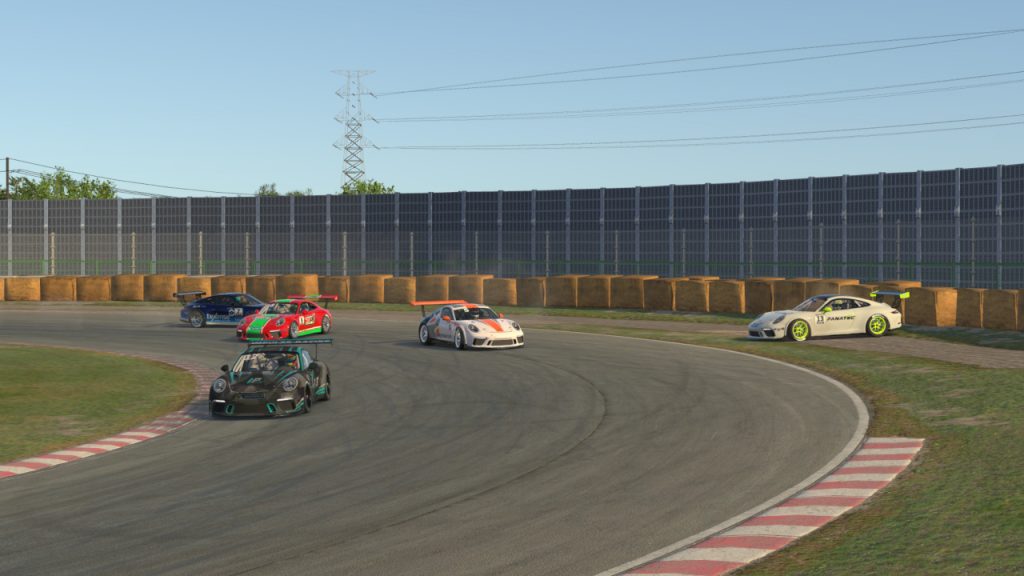
Phase 2: Hitting My Stride
That next week for the Porsche series took to the temporary street circuit on Belle Isle. It’s a track I’ve raced before during a Summer Road Trip, but that was in the nimble open-wheeled Formula Renault 2.0. Tackling it in a full-fendered beast of a GT tank would be a different story.
Even banking on attrition for decent finishes wouldn’t be a guarantee this time around, given the talent level in the Porsche field. However, keeping it clean would certainly be the biggest step to gaining experience, and eventually, speed.
That was hard to come by early on. In my first race, I struggled to even hit the high 1:31s en route to a twelfth-place finish. But in each of my races, I steadily improved: mid-1:31s by the end of race 2, low 1:31s in race 3 while climbing from thirteenth to sixth, and high 1:30s in my fourth and final race.
That one will go down as my best of the season, both in terms of points — 170 for a third-place finish — and overall performance. After starting eighth, I gained two spots from a good standing start, another when a car ahead ran wide the following lap, and two more mid-race when the leader crashed and I made an on-track pass for third.
Despite my perceived improvement, though, there were still reminders of how far off I actually was. While I pushed to hit the 1:30s, the quick guys were in the 1:29s, and even in my best race, I was the #2 car finishing third — based on iRacing’s numbering system, an underachieving effort.
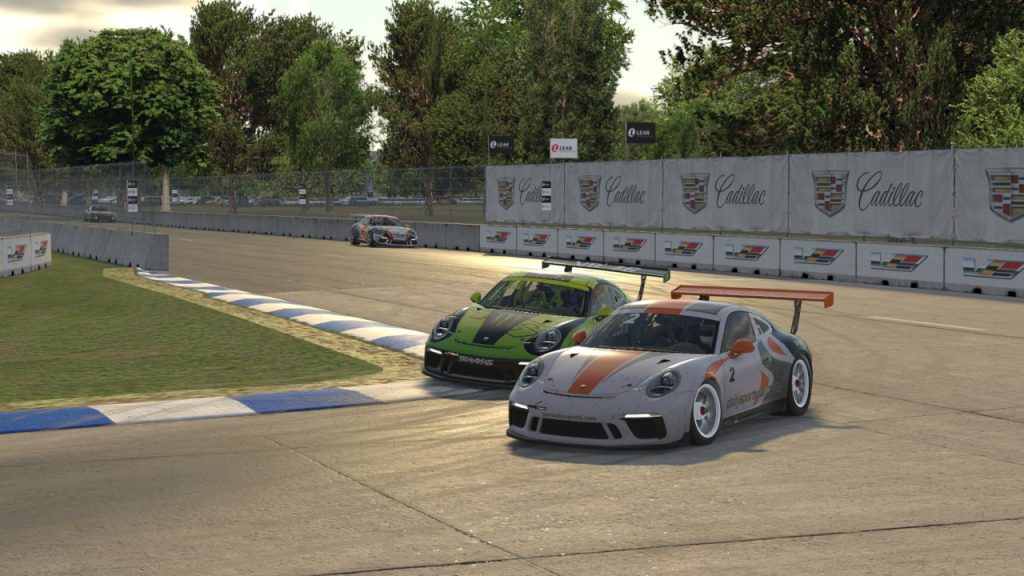
It was hard not to feel better about my own driving, though, and I got another needed boost in the following week at Brands Hatch. Running the Indy layout with a short lap similar to Tsukuba’s, I found my gap to the fast guys was more like three tenths rather than a full second.
As proof of my new-found speed, I nabbed my first and only pole position of the season in a Saturday morning race, but some early damage while passing a lapped car dropped me to second place and seemed to doom my chances for a win.
On the final lap, though, traffic nearly became my enemy-turned-friend as the race leader was slowed and lost almost all of his three-second advantage. In a last-gasp effort to get to his bumper, I overdrove the final corner and instead let the third-place car get a run on me.
We had a door-to-door drag race down the undulating frontstretch, and he ultimately nipped me by 0.012 seconds. As we exchanged well-wishes and disbelief after the race, I was reminded that even on the losing end of a battle, this car is just too good to pass up.
Another podium in my second race of the week let me leave Brands Hatch satisfied. In addition, seven straight incident-free races had helped my safety rating recover back to a maximum 4.99 level, and my iRating had rebounded from a low of 4833 after the first Detroit race to 4925 and within shouting distance of my long-time but rarely held target of 5000.
In my final three weeks of the season, I’d either make it there or die trying.
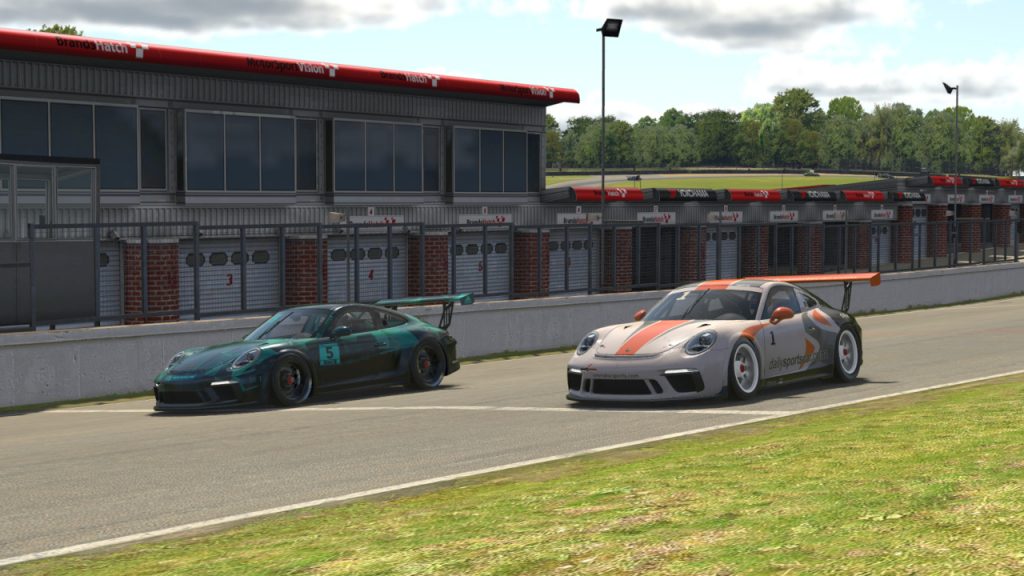
Phase 3: A Multidisciplinary Lack of Discipline
My next round at Zandvoort was literally a one-off, as I had time for only one Saturday night race that proved to be a struggle with limited practice and a lack of laps around the Dutch track.
As the #1 car in the race, I finished a distant seventh and lost a chunk of 26 iRating to the likes of the #11 and #14 cars, who were hands-down quicker than me.
The next week, though, seemed like an ideal opportunity to recover and even see how much I’d improved after running only the Porsche for the entire season. For week nine of the season, it was back to Barcelona.
Even with recent experience around the track and a good qualifying run in NEO, it didn’t seem to pay off in my first race. I qualified only fifteenth, and I couldn’t avoid a spin ahead of me on the first lap, leaving me with race-long damage while the rest of the field was squeaky clean. A last-place finish cost me all of the iRating I’d regained and then some.
After a few practice laps to knock the rust off, the next race went better, recovering from a first-lap power slide to climb from ninth to sixth. No, it wasn’t enough to repair my damaged statistics, but at least it was nice to feel like I hadn’t regressed at this track since the NEO race.
My final week of competition this season was an action-packed one. The official GT3 series were at Road Atlanta, so I put the Porsche on the back burner for a few nights and focused on running the 40-minute sprint races in the Mercedes AMG.
While my entire season in the Porsche had been free from any major incidents or entanglements with other drivers, jumping into the GT3s seemed to make me one of those drivers — the dreaded kamikazes that for years gave the GT3 class on iRacing a bad name.
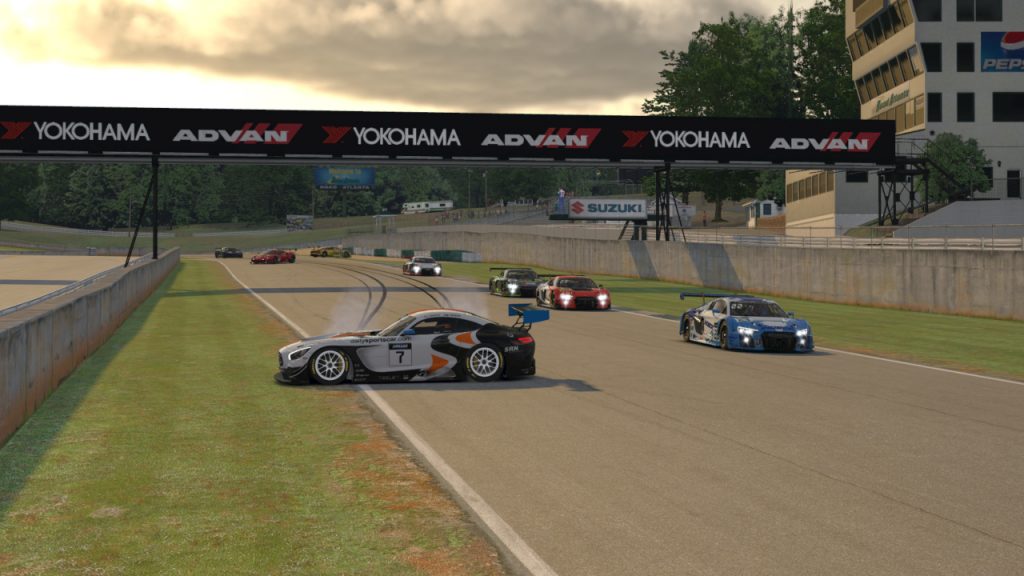
In one race, I had driven inside the top ten and found particular pace through turn 1. But making moves there proved to be my downfall. In one case, an attempted drive around the outside of an Audi resulted in netcode contact, for which that driver blasted me as “overly aggressive”. A few laps later, a similar move on a McLaren resulted in bumper-to-bumper contact that ended my race.
Eventually, I turned my attention back to the Porsche for a pair of Friday night races at Road America. It’s a combo I’ve driven before with winning results, and returning to it now only reminded me of how much fun it is to push a Porsche through the Carousel or test the limits of the track and the gas pedal in the Kink.
In my first race, I was in the draft train chasing down second place, but a potential top-five evaporated when I clipped the grass a few laps from the end, putting me back to ninth.
In the next race, I made my best standing start ever, driving from third into the lead, but the pace of two quick drivers behind me was too much to hold back, so I finished in third.
With eight weeks of Porsche Cup completed, that left a few final attempts at Road Atlanta, this time with Karl joining me in the Mercedes just as we’d left off at Sebring three months earlier.
This time, the results weren’t nearly as good. Our attempt at the three-hour endurance race ended in a first-lap pileup. And in our solo drives in the sprint race that followed, I found a punching bag in a BMW ahead of me. After three rounds of car contact — all my fault — I was left to finish nineteenth and endure an earful of his justified frustration afterwards.
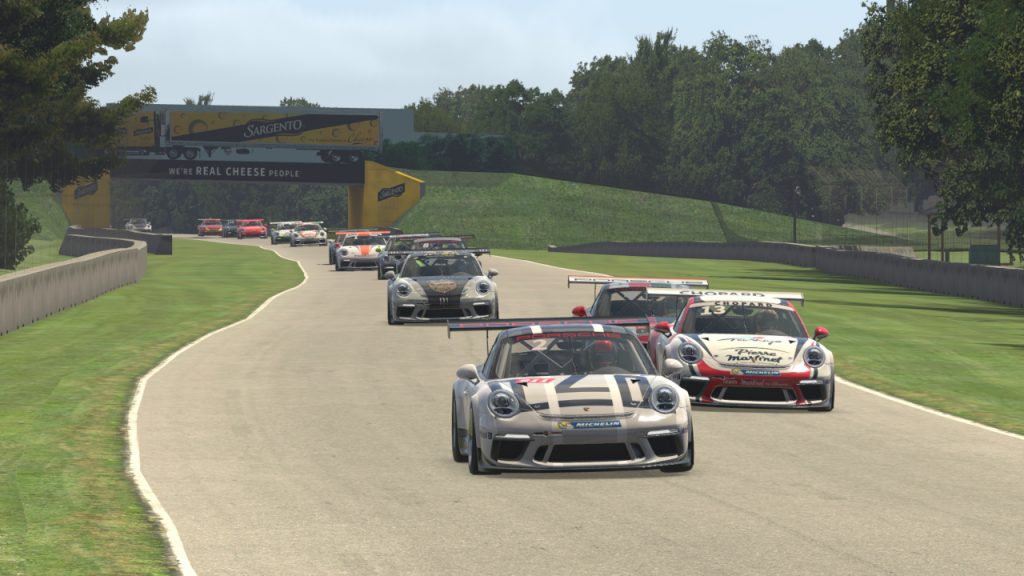
Season in Review
That bloody Sunday dropped me to 4624 iRating and 3.40 safety rating — the lowest I’ve been at either measure since the later stages of my last Summer Road Trip in 2017.
Even ignoring those rough races at Road Atlanta, it was a season of mixed feelings and mixed results for me. Instead of jumping into the Porsche and consistently battling for podiums, I went winless and my results rarely matched my car number — an old rule-of-thumb within iRacing.
In fact, only once all season did I finish as high as my number suggested I should, and on average, I finished six positions behind my iRating rank in the field.
My biggest surprise all season was the pace of drivers with much lower iRatings — sometimes half of mine, but several tenths quicker than me. Regardless of where they came from and how long they’ve been on iRacing, their speed and ability was undeniable.
From that, though, perhaps I should take some encouragement that iRacing is growing, and with more people to race against, it’s becoming easier to find a battle against someone my own speed, no matter how fast or slow that may be.
And going forward, perhaps I should remember my own musings on iRating — a nuanced number that may rate mediocre drivers who finish races more highly than fast drivers who occasionally DNF.
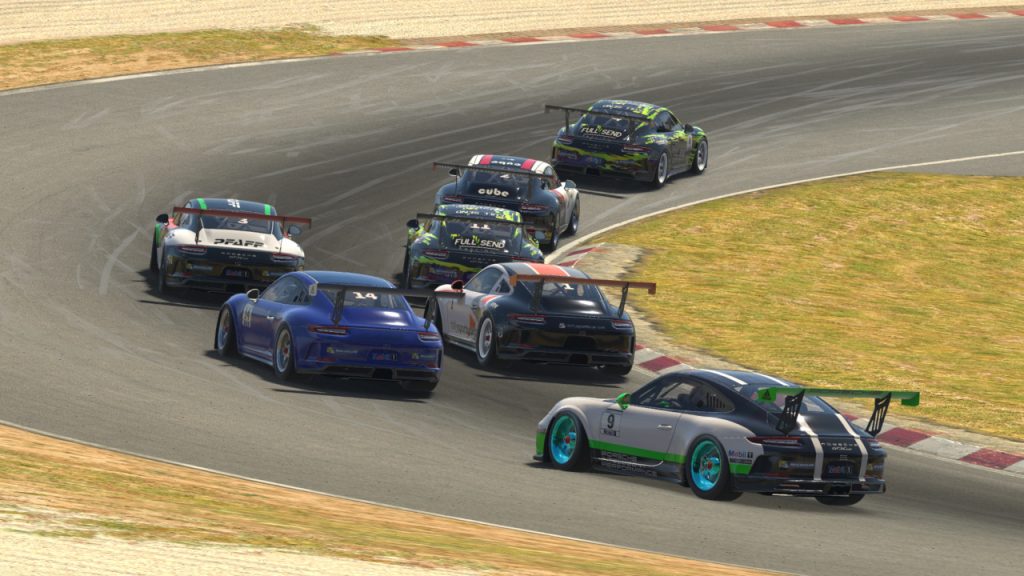
Indeed, in my own experiences this season, my biggest iRating drops came in those crash-affected races, and those losses more than offset any gains from a streak of clean races when I was driving at my best.
Being too safe might not be possible in real-world racing, but when it comes to iRating inflation, apparently I’ve been too safe over the years, boosting my statistics beyond my actual skill level.
But even if I’m not as strong of a Porsche driver as I thought, and even if my season did end with a few bad runs and some name-calling in my direction, it certainly won’t discourage me from racing as lockdowns lift and summer arrives.
The 1987 NASCAR Cup cars set to arrive in this week’s build are enticing for a former oval driver who has been turned off by the increased downforce and decreased horsepower of the top stock cars in recent years. Perhaps that series might lure me back to circle tracks in the upcoming season.
I do still plan to stay active on the road side as well. Along with always-tempting official races in the Porsche and GT3 series, the 24 Hours of Spa is looming in July, and Karl and I are pondering a two-man effort in a bid to make amends for our — er, my — crash out of the lead five years ago.
To do that, I will need to tame my unexpected aggression in a GT3 car and perhaps uncover some hidden talent within myself.